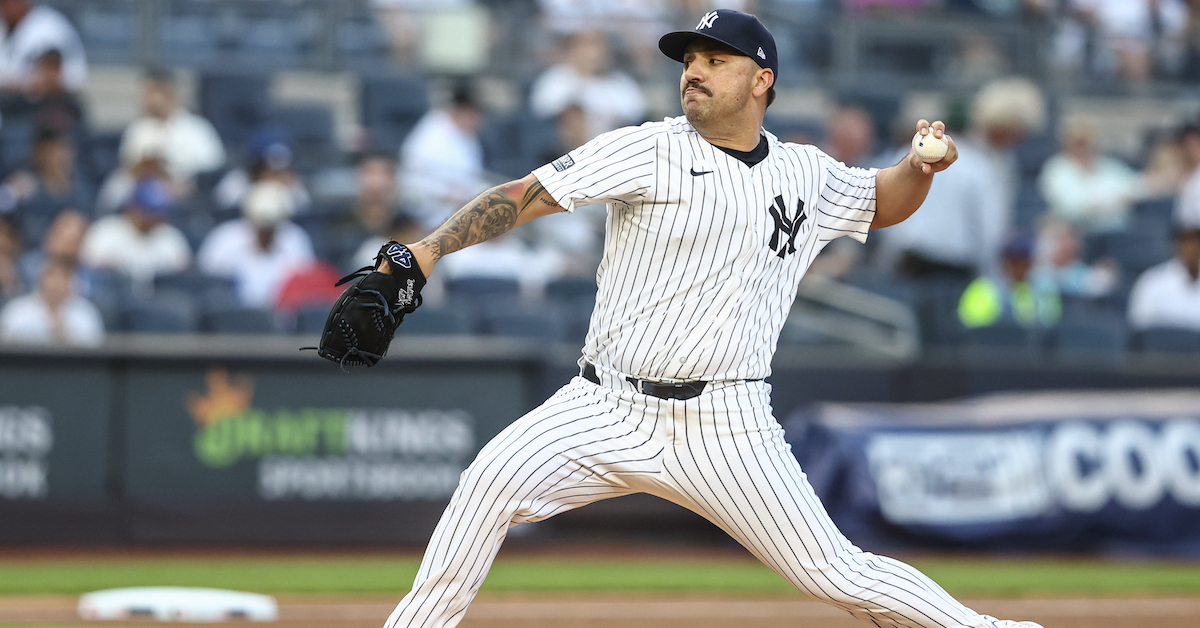[ad_1]
If you’ve been in a ballpark a half hour or so before game time, you’ve probably noticed the starting pitchers playing catch with a teammate or a coach in the outfield. You’ve likely also observed them subsequently going into their respective bullpens to warm up, readying themselves to face hitters once the contest begins. This is integral to a starter’s pregame preparation, but it’s only part of the start-day routine. That routine, which varies from pitcher to pitcher, is typically scripted. From going over scouting reports to the number of throws mades before taking the game mound, everything is planned out.
How exactly does a big league starter prepare for a game? A pair of New York Yankees — pitching coach Matt Blake and veteran left-hander Nestor Cortes — detailed the process in separate interviews last weekend at Fenway Park.
“Some guys are a little more scripted than others. They’re all going to be in the vicinity of 25-35 pitches. You might have some outliers who are closer to 20 or 40, but generally 25-30ish pitches is usually the target to get yourself ready. That’s in the ’pen. There is some level of catch-play before, whether it’s long toss or PlyoCare work, to get your body prepared to get on a mound for the 25-30 pitches.
“Depending on their arsenal, they might carve out a certain amount for each pitch. For instance, Gerrit [Cole] is pretty scripted. He might do 12 or 13 out of the windup, then 12 or 13 out of the stretch, and then assess if he needs any more than that. Some guys might be mostly out of the windup and a couple out of the stretch at the end. We’re always trying to identify the foundational routine. What is it they need to work on to get ready for the game plan that night? Maybe you’re facing a couple of batters at the end of your bullpen. You’re saying, ‘This is the first batter and these are the areas I want to get to. Here is the second batter.’ You’re putting together some sequences that are akin to what you’re going to throw to start the game off.
“How hot or cold [the temperature] is might dictate how many pitches they want to throw in the ’pen. How many days of rest they’ve had may factor in. There are times when a guy doesn’t quite have what he wants, so he might go closer to 40. Gerrit will do that from time to time. And you have to understand that there’s a cost to throwing more in the ’pen before you start the game. You have to be smart about that.
…
“One thing that has become more prominent is guys wanting tech in the bullpen before the game. They do so much in between [starts] and in game, understanding what their profiles are, so more guys have become accustomed to getting their profiles in the bullpen before they come into the game. All of our guys do it — it’s just a matter of weighting their warmup and adjusting things based on that, versus just knowing where they’re at on a given day. They’re being cognizant of that when they get out there. If normally you’re 18-and-half [inches of] Z, or vertical break on your fastball, and you go to Colorado and it’s closer to 13, what does that do for you mentally? Do you know you have to pitch in a different area? Do you have to use different pitches? Being aware of those types of fluctuations is important.”
“For a 7:00 game, I usually get to the stadium around 2:00. I change into my shorts and shirt and will probably look at the scouting report on my own before we do the meeting with the catcher and pitching coach. I’ll probably get a snack around 4-4:30. Around 5:30, I’ll do that meeting with the pitching coach and the catcher, going through what the game plan is and how we want to execute. Around 5:45-5:50, I start getting stretched in the training room. That’s when I start locking it in — but I’m not really the type of guy to put in headphones and forget about the world. I like to be involved with everybody that’s around me. I talk to guys and stuff like that.
“Around 6:20, I’ll be in the weight room getting stretched out, doing things to be loose and be ready to compete out there. In the training room it’s just arm and left leg — my push-off leg — and then in the weight room it’s a full body stretch. I’ll be stretching out my torso and getting rotation, and doing all the other stretches for upper body. Around 6:35-6:37, I’ll start playing catch for about 8-10 minutes. It will be about 35-40 throws, 120 feet max. Then I rest for five minutes before I throw my bullpen. That will make it about 6:51 when I start throwing my bullpen.
“I want to be in the 25-32 range in my bullpen. That’s also 8-10 minutes. I do about 20-22 from the stretch, and then about 10 or 12 from the windup. That takes me all the way to about 7:01-7:02. Our home games are 7:08, and it takes me about two minutes to walk in, so I’ll be in [the dugout] around 7:04. I wipe the sweat off my face, take a few sips of water, and go out there for 7:06.
“If we’re playing away, I’ll delay everything by about three minutes. How long [the half inning is] obviously varies, but I want to be as close as possible to the start of the game.”
[ad_2]



